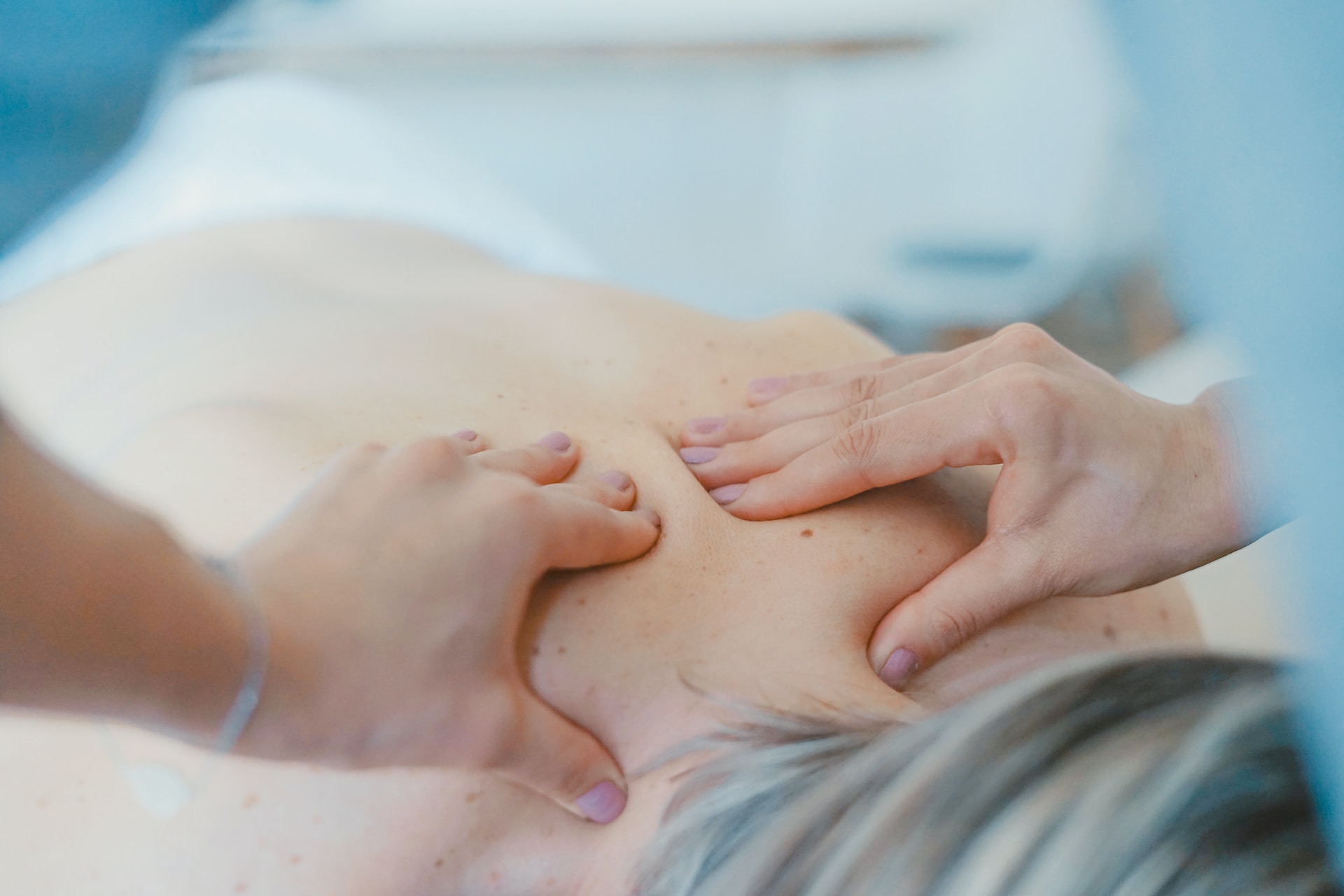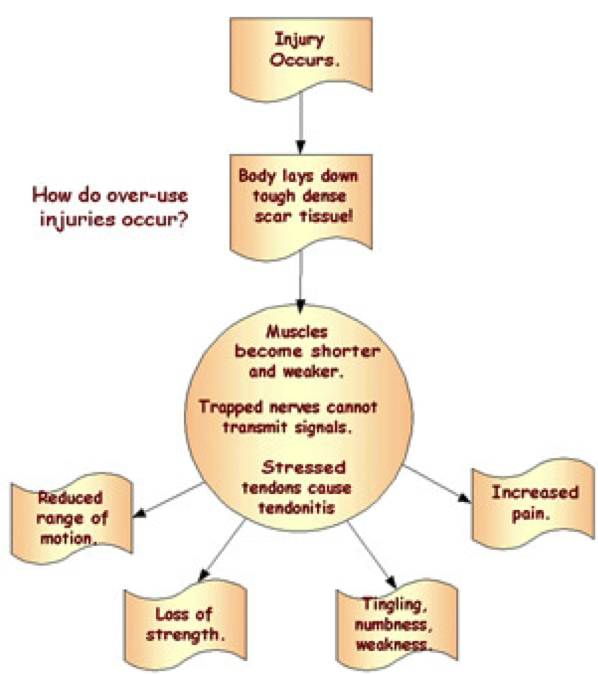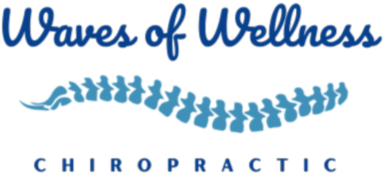
ART is a patented, state-of-the-art, soft tissue management system developed by Dr. Michael Leahy (an Air Force engineer/chiropractor) that treats problems occurring with:
- Muscles
- Tendons
- Ligaments
- Fascia
- Nerves
Injuries to these tissues can occur in
3 different ways
- Acute trauma injury – a sprained ankle playing racquetball is a great example of this type of injury.
- Compression injury – an example of a compression injury would be back stiffness and pain and/or numbness down the leg (sciatica) caused by sitting behind a computer frequently and for long periods of time. Sitting causes reduced oxygen flow to the tissues, which in turn causes the numbness and/or pain.
- Overuse injuries – frequently seen in people whose jobs involve typing all day. The repetitive motion can produce wrist and hand pain (i.e. carpal tall syndrome) due to the accumulation of small tears in the tissues.

Each of these changes causes your body to produce tough, dense scar tissue in the affected area. This scar tissue binds up and ties down tissues that need to move freely. As scar tissue builds up:
- Muscles become shorter and weaker.
- Tension on tendons causes tendonitis.
- Nerves can become trapped.
This can result in reduced ranges of motion, loss of strength, and pain. With trapped nerves, you may also feel tingling, numbness, shooting pains, burning sensations, weakness, muscle atrophy and circulatory changes.
Even when most doctors say medications or surgery is the only answer, ART may still be able to resolve the symptoms and put you back on the field or back to work and into your best game.
- Arthritis
- Achilles Tendonitis
- Ankle Injuries
- Back Pain / Injuries
- Bicepital Tendonitis
- Bunions
- Bursitis
- Carpal Tunnel Syndrome
- Compartment Syndrome
- DeQuervain’s Tenosynovitis
- Dupuytren’s Contracture
- Foot Pain / Injuries
- Frozen Shoulder / Adhesive Capsulitis
- Gait Imbalances
- Golfers Elbow (Tendonitis)
- Golf Injuries
- Hammer Toes
- Hand Injuries
- Headaches
- Hip Pain
- Iliotibial Band Syndrome
- Impingement Syndrome
- Joint Dysfunction
- Knee Meniscus Injuries
- Knee Pain
- Leg Injuries
- Muscle Pulls / Strains
- Muscle Weakness
- Myofascitis
- Neck Pain
- Nerve Entrapment Syndromes
- Plantar Fascitis
- Post-surgical Pain
- Repetitive Strain Injuries
- Rib Pain
- Rotator Cuff Syndrome
- Running Injuries
- Scar Tissue Formation
- Sciatica
- Shin Splints
- Shoulder Pain
- Sports Injuries
- Swimmers Shoulder
- Tendinitis
- Tennis Elbow (Tendonitis)
- Thoracic Outlet Syndrome
- Throwing Injuries
- TMJ / Jaw Pain
- Weight Lifting Injuries
- Whiplash (Hyperextension / Hyperflexion) Injuries
- Wrist Injuries
What happens during an ART treatment?
Every ART session is actually a combination of examination and treatment. As an ART Doctor, I use my hands to evaluate the texture, tension, movement and function of muscles, fascia, tendons, ligaments and nerves. Abnormal tissues are treated by combining precisely directed tension with very specific patient movements.
These treatment protocols – over 500 of them – are unique to ART. They allow us to identify and correct the specific problems that are affecting each individual patient. ART is not a cookie-cutter approach.
Treatments take about 8-15 minutes for each area being treated. A condition may require 2-12 visits before full functionality is restored. Chiropractic manipulation is frequently carried out in conjunction with cold laser therapy to increase treatment effectiveness (look in tab “knee pain/plantar fasciitis” for more information on cold laser therapy).
Whenever possible, we have our patients perform active movements during the treatment process. Active motions stimulate neurological pathways in the spinal cord that help to reduce pain during treatment. Motion also help to reproduce the stresses the patient will actually be under during normal active motion.

Does ART Hurt?
Active Release Technique is non-invasive, very safe, has virtually no side effects, and has a record of producing very good results. When a soft tissue problem has resolved the symptoms will not return unless the injury happens again. To avoid future injuries, we instruct our patients in specific exercises, give postural recommendations and explain to our patients the mechanism of injury so that it may be avoided in the future.
Treatments can feel uncomfortable during the movement phases as the scar tissue or adhesions “break up.” This discomfort is temporary and subsides almost immediately after the treatment. In fact, it is common to feel a duplication of your pain symptoms during the treatment – that’s a good indication that the problem has been identified.
